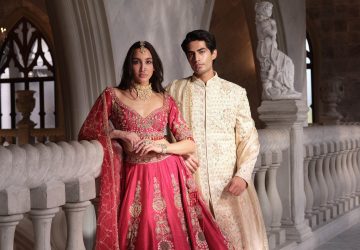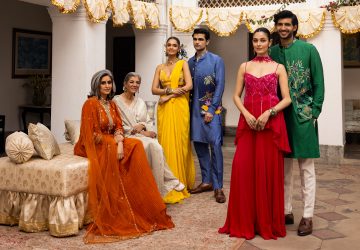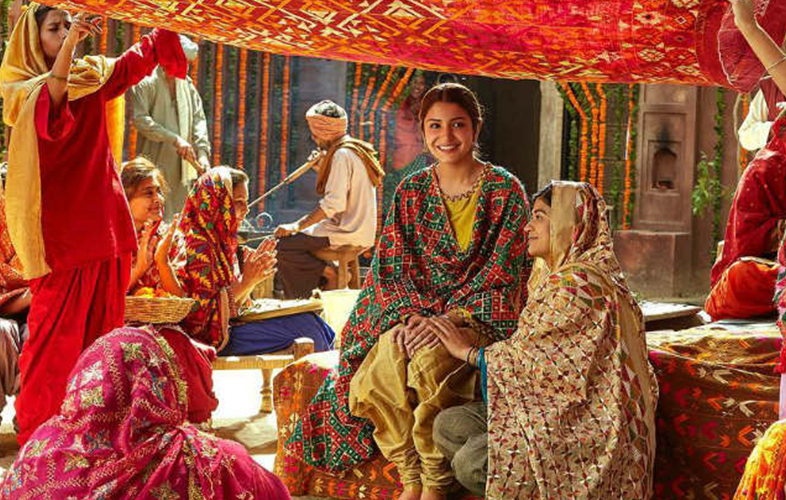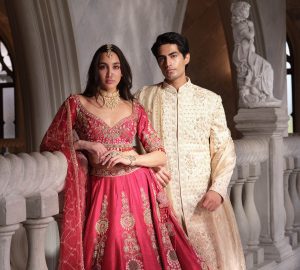The traditional art form of Punjab ‘Phulkari’ obtained from two words ‘phul’ and ‘kari’ meaning flower and work is said to begin in Punjab in the 15th century by the women of Punjab. Bright and vibrant textile art involves needlework and produces the most straightforward designs to produce a fascinating, appealing, and embellished product. It is said that Phulkari work is also mentioned in Heer Ranjha’s Waris Shah love story. References to this embroidery tradition also go back to the Vedic ages. Phulkari chadar, dupattas, and other veil clothes of women used to be exchanged as gifts during weddings or heirlooms.
Emotional Engagements & Self-expression
The inspiration for the Phulkari motifs would come from their imagination based on surroundings, nature, animals, birds, gardens, or just even a mother-daughter talking to each other. Marigolds, jasmine, peacock and mustard flowers were often the language of their emotions, creativity, and expressions.
Traditional Techniques & Materials
As Phulkari consists of symmetrical patterns, the craftsmen, and women must count the number of stitches on each side and then proceed which makes Phulkari a tedious technique. However, with time, people are moving on to new techniques, and apart from coarse khaddar fabrics, silk, georgette, chiffon, and regular cotton also started coming into use. In earlier times darning stitch- the most important stitch was used to border the khaddar. Other stitches like herringbone stitch, buttonhole stitch, and running stitch were also used. These stitches were used to create an unusual motif or for bordering.
The use of colours plays a very significant role in Phulkari art. Traditionally, only four colours were used, and each had its own significance. Like white for old women and widows, red for young girls and brides-to-be, and blue, black, and dark shades for daily use. Red was the most common to represent enthusiasm, orange for energy, and green for fertility.
Regional Variations
There is not one but many different types of Phulkari present in India. And what makes one Phulkari different from another is the darn stitching method, done on the reverse or wrong side of the fabric, which makes this handcraft stand out. Here are the different Phulkari designs one must know.
- Bagh- It’s the pattern where the whole fabric surface is embroidered by horizontal, vertical, or diagonal stitches.
- Chhamas- Chhamas fabric has mirrors stitched or sewn into the fabrics using yellow, grey or blue threads.
- Neelak- Neelak designs are formed by a black or red background and have bright yellow or red embroidery above. The design is paired with metal or copper threads for a distinct shiny texture.
- Chope- Chope is done by embroidering on both sides of the fabric and is traditionally done in yellow and red threads. Series of triangles or step-ladder fashion form this embroidery.
Well, there was a time when there were 52 different types of Phulkaris which have now come down to a handful only. Punjab, Haryana, and Rajasthan are the states that majorly use the Phulkari traditional art and embroidery.
Revival of The Forgotten Love Of Punjab’s Traditional Handicraft
Once the art was passed on from one generation to another during weddings and occasions. But years back, the art of Phulkari seemed to be slowly fading away from the lives of Punjab and was at risk of being forgotten.
So that the century-old embroidery tradition that flourished during the reign of Maharaja Ranjit Singh should not lose its journey to modern times; Virsa– The Heritage- mother daughter enterprise has been working tirelessly. It’s all about protecting and preserving the ‘viraasat’ of Punjab-Phulkari- and not only as a handicraft but also as a traditional art form. The aim of the organization is to work with museums, click pictures, paint the Phulkari, convert them into stencils and provide all to the artisan community so that they can learn or re-learn the art form, stitches, patterns, and weaves. There are initiatives taken and exhibitions held by universities and organizations to save the handicraft.
The Past & Present Of Phulkari- From Timeless Tales Of Heer Ranjha To Modern Fashion
Earlier the heritage and charm of Punjab, Phulkari was restricted to scarfs, shawls, chadars and dupattas. But today the evergreen Phulkari creates masterpieces like kurtas, lehengas, fusion outfits and even footwear and bags. Also, in earlier times this embroidery was done by women with hands (manually) but now machines, modern techniques and new materials are used for the art.
The most sought-after embroidery techniques of India are used for jackets, pouches, clutches, umbrellas, dupattas, stoles, sarees, shrugs, skirts, kaftans and more. Today, Phulkari is a craft loved and appreciated in all its forms.
Global Appeal
Having bagged the contemporary label, Phulkari today is a lot different. New designs, styles, and techniques are being established by several modern designers to reach out to new and fresh segments across the globe. People from all around the world exhibit their excitement to indulge in the culture and tradition of Punjab. No wonder, the rich art has slipped into the western countries through exhibitions and fashion shows. That the style is for all seasons and has its wearability all around the year; the global demand for Phulkari outfits continues to go up.
Wearing Phulkari
A Phulkari suit or a saree can be mixed and matched with a dupatta or a designer blouse respectively. One can look admirable with silver or oxidized jewellery to complete the traditional look. The Phulkari kurta can be paired with a belt or contrast coloured jacket for that fusion touch. Bright red, yellow, green, and blue shades can add a touch of celebration and joy to the Phulkari outfits. One can also go for Phulkari accessories like belts, juttis, and purses for a trending yet festive appearance.
Here was the tale of the fascinating art of Punjab and a craft tradition of India which has lived through centuries and was there as a special feature at every celebration, wedding, and festival. Enjoy and explore the world of Phulkari!
Also Read: Effortless Sophistication: Your Complete Tutorial to Perfect Nivi Saree Draping
![]()








